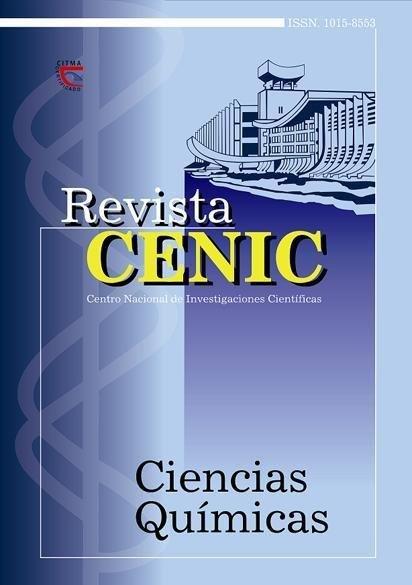Fotooxidación sensibilizada de furfural en medio n-butanólico. II. Efecto de la presencia de agua en la reacción
Abstract
The photosensitized oxidation of furfural in butano] at 60 ºC has been performed with addition or not of water at the beginning of the reaction. In both cases 2,5-dihidro-5-hidroxi-2-furanone (I) (in equilibrium with its non cyclic form, the β-formilacrylic acid) and 2,5-dihidro-5-butoxi-2-furanone (II) were the main reaction products, showing the reaction with initially added water a higher selectivity toward the second product. This behavior is surprising since the presence oflarge amounts of water should dificult the reaction with n-butanol of che first mcntioned product. The reaction of (1) with butano! giving (II) occurs under mild conditions and the withdrawal of water from the final reaction mixture through azeotropic destilation with n-butanol at low vacnum and 60- 80 ºC favored the obtaining of higher yields of (II). When the azeotropic distillaton was performed at more severe temperature conditions (at atmosferic pressure), butyralization reactions lowered strongly the yield of (II). Formic acid, expected to be from literature reports an important product of the photosensitized oxidation of furfural, is oxidized under the reaction conditions and therefore constitutes a source of water formation. This could explain the formation of (I)in experiments without addition of water.

Downloads
Published
How to Cite
Issue
Section
License
Copyright (c) 2000 Copyright (c) 2000 Revista CENIC Ciencias Químicas

This work is licensed under a Creative Commons Attribution-NonCommercial-ShareAlike 4.0 International License.
Los autores que publican en esta revista están de acuerdo con los siguientes términos:
Los autores conservan los derechos de autor y garantizan a la revista el derecho de ser la primera publicación del trabajo al igual que licenciado bajo una Creative Commons Atribución-NoComercial-CompartirIgual 4.0 que permite a otros compartir el trabajo con un reconocimiento de la autoría del trabajo y la publicación inicial en esta revista.
Los autores pueden establecer por separado acuerdos adicionales para la distribución no exclusiva de la versión de la obra publicada en la revista (por ejemplo, situarlo en un repositorio institucional o publicarlo en un libro), con un reconocimiento de su publicación inicial en esta revista.
Se permite y se anima a los autores a difundir sus trabajos electrónicamente (por ejemplo, en repositorios institucionales o en su propio sitio web) antes y durante el proceso de envío, ya que puede dar lugar a intercambios productivos, así como a una citación más temprana y mayor de los trabajos publicados (Véase The Effect of Open Access) (en inglés).













